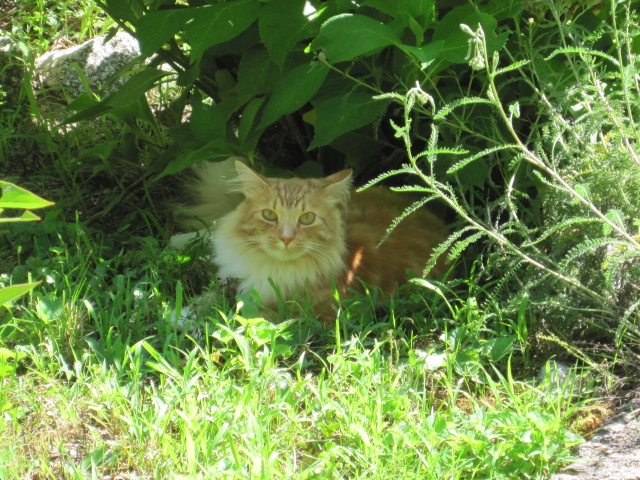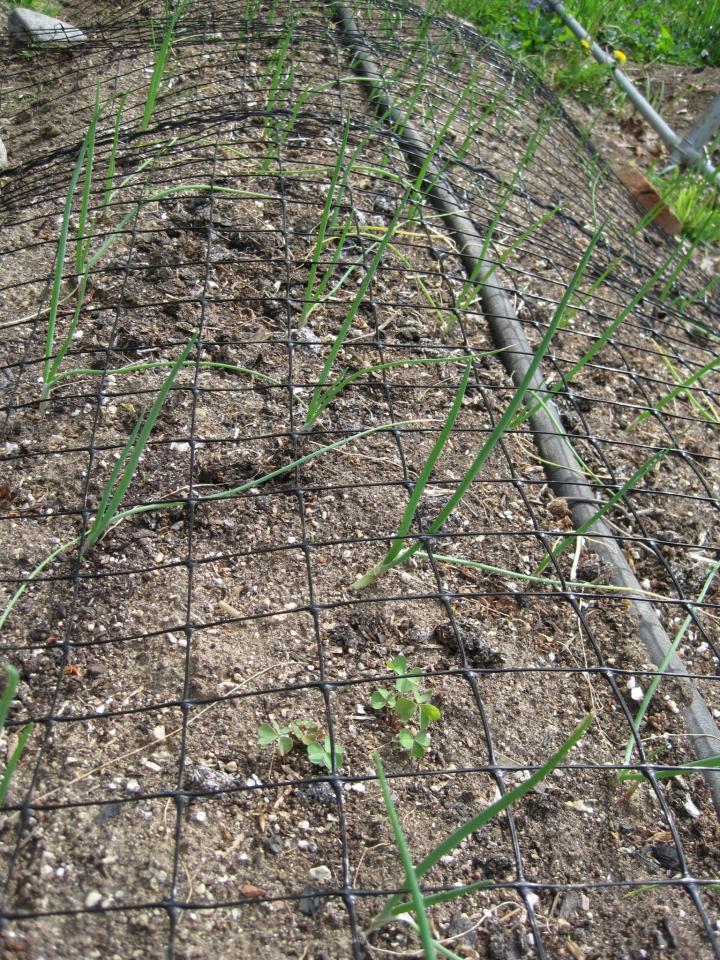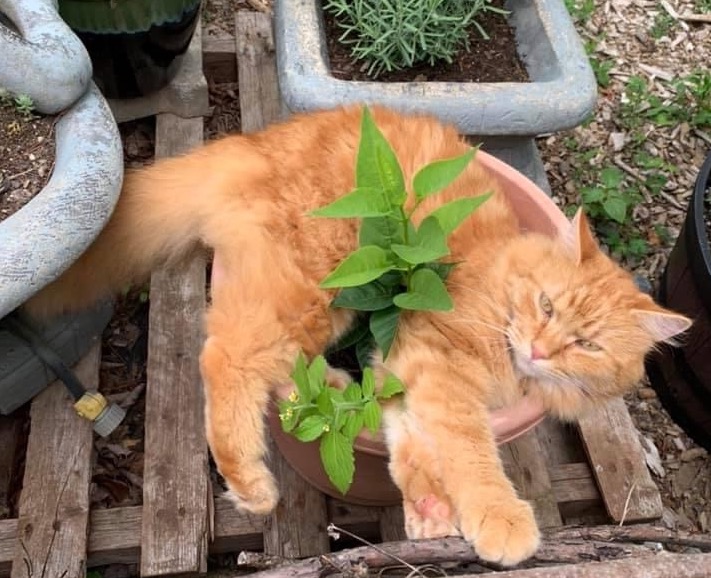
Caption
Kitty Boy Floyd
Photo Credit
Robin Sweetser
More Like This
I don’t have cats as I’m very allergic to them. However every cat in the neighborhood comes in my yard and poops anywhere they can find bare dirt especially in the winter. They especially like my container garden! Now when I plant my containers I also “plant” small twigs about 6” or so long and smaller around than a pencil. Place them upright and 4-5 inches apart so they don’t have room to squat and do their business. They don’t like getting poked in the butt. I’ve had excellent success doing this. Now if I could just keep them out of the rest of my yard………
First of all ... I was not a cat person and yet I have two. I am definitely a dog person having had at least 30 beloved dogs in my lifetime and hope to have more. These two cats appeared at my home because it was a convenient place to dump them. Big storms were coming and "Yes, I took them in" ... one was an older supposedly feral cat the other was a teenager. The older one was not feral and I now have two house cats which I keep inside for safety. My state has Trap, Neuter, & Release (TNR) so they were fixed for free. Cats can be beneficial and destructive as well and so can dogs and people. God put them on earth for a purpose so please ... "All you cat haters give the cats a chance ... they are not bad .., bad are owners who get them, dump them, and not have them fixed. Average feral cats only have a life span of 3-5 years w/o human intervention. God watches all creatures including you ! May everyone be blessed and be thankful for what they have.
Thank you for taking in and caring for these cats, especially despite not (initially) being a cat person!
My neighbors on 3 sides of my home, all have cats that they allow to roam the neighborhood freely. For some reason they want to congregate at my house. The cats have destroyed my flower beds, raised bed garden plants, patio furniture. The males spray everything including underneath my car which then leads to me having to have the undercarraige washed constantly. One made a large hole in my wooden door of my shed to go inside and have kittens. I have tried multiple "humane" ways to keep these destructive, nasty critters away but nothing works and I am sure that's because the neighbor directly beside me puts multiple bowls of food outside on her porch to attract them in - because she "cares so much about them". She never allows them inside her home, even in the worst weather. These cat owners who allow and encourage free range cats IMO should be fined heavily and barred from ever having pets again. I've called the local humane society as well as local law enforcement, town council, etc and no one will do anything to remedy the problem. I'm ready to set out traps and permanently "rehome" them.
I hear you and feel your pain. I have a neighbor that allows their cats to free range as well. I have seen them on numerous occasions on my property. I have asked the neighbor politely to keep them indoors with no avail. My problem is I am severely allergic to cats. I should not have this feeling of fear to go outside on my own fenced in property. Fear they have sat on my furniture or left hair behind that maytouch me and I will have a severe allergic reaction to. I don't hate cats, just the allergic reaction I get from them. I can't even hug a person who owns cats without having a reaction. Scary life for me as I love to hug. Blessings to all.
Why in the hell would there be a article on how to keep cats out of your yard or garden.??? I want cats in my garden or yard. They help keep assinine squirrels out of the yard. It’s squirrels that are damaging my yard, not cats. Its so typical that there is some anti-cat article. We put dogs on the highest pedestals, but treat cats like their evil. I LOVE cats. Someone has to.
If you read the story, the author has a cat. Lighten up you beta.
Why the hell do I want cats in my garden? I am trying to grow vegetables without them kiling my plants and pooping and spraying all over the place without my hitting them on the head with a shovel or shooting them. I have a cat and she stays in the house. Why would I want her outside to bring fleas and ticks back into my home? You are a silly no-brainer nut.
Cat people, ugg. Read the article before you comment. Its about keeping’s them from pooping in your veggie garden. Also my dog has to be on a leash and would end up euthanized or in the pound if it jumped a fence into your backyard to poop but its perfectly okay for you to let your cat do it? Thats a huge double standard . Especially when you know the stats about how cats have effected bird populations and other small mammals like the Western Fishers in Washington state. They aren't indigenous yet they are free to roam and screw up ecosystems. They are predators, possibly cute in your opinion, but still a predator. Look up the havoc they have wrecked in Australia with many of the smaller marsupial populations. I don’t hate your cat but I don’t want it in my yard , and pooping its toxic and often parasitic poop in my veggie garden. So maybe more reading less commenting on things you haven’t read. Also none of these suggestions in this article are harmful to your obnoxious cat.
Chill out dude nobody's saying they're going to hurt a cat it's just another way to keep cats from pooping in your garden because their poop is just ridiculously smelly calm down
- « Previous
- 1
- 2
- …
- 10
- Next »












Comments